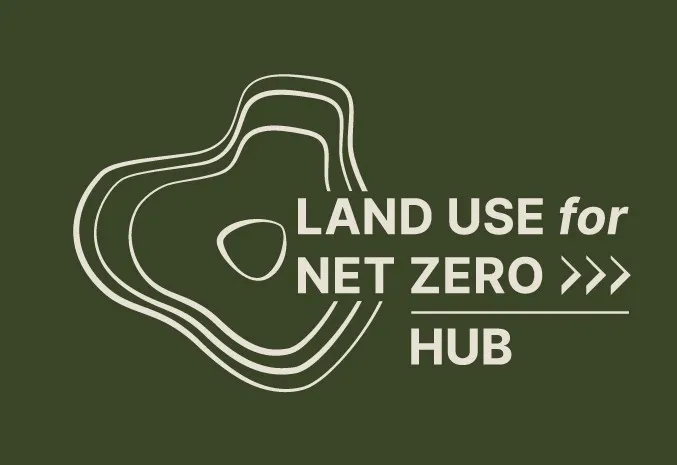This study by CE DELFT, a Dutch independent research and consultancy organisation , examines how food consumption patterns might be influenced in order to reduce food related GHG emissions. Its stated objective is to identify and analyse policy options which offer potential for achieving this goal.
This study by CE DELFT, a Dutch independent research and consultancy organisation, examines how food consumption patterns might be influenced in order to reduce food related GHG emissions. Its stated objective is to identify and analyse policy options which offer potential for achieving this goal.
This report feeds into the EU study Behavioural Climate Change Mitigation Options and Their Appropriate Inclusion in Quantitative Longer Term Policy Scenarios for the European Commission.
The study begins by highlighting the significant contribution that food and drink production and consumption make to global and, more specifically, EU GHG emissions. It then provides an overview of previous academic literature which considers the role that consumption changes could play in reducing GHG emissions.
This analysis provides the basis for considering scenarios to achieve consumption related GHG reductions. A wide range of scenarios were filtered through a three-step process which included a. removal of behavioural changes with poor data availability, b. the ranking of remaining changes according to their mitigation potential and finally, c. the selection of those with high policy relevance. As a result of this process, the authors define three behavioural change scenarios:
- Vegetarian diet: no consumption of meat, fish or seafood.
- Reducing all animal protein intake including dairy and eggs: one day/week without animal proteins.
- Reducing intake to a ‘healthy’ level: reducing daily intake to 2,500 kilocalories, eating 500 grams of fruits and vegetables, limiting saturated fat intakes to 30% and sugar and other measures in line with WHO recommendations.
The report uses as its baseline current EU consumption patterns, which are divided into four main types – North-West, North-East, South-West and South-East EU region diets. It finds that diets associated with the South-Western EU region currently carry the highest GHG burden (this region includes France, Portugal, Spain, Italy, Malta).
Based on these baselines, it models alternative diets for the scenarios given above. It finds that the vegetarian diet scenario offers the biggest potential for GHG emission reductions– a drop from a BAU scenario of 634 Mt per year for the whole EU-27 to the level of approximately 375 Mt per year. For all scenarios, most of the reductions come from changes to agricultural production within the EU.
Note that this reduction is based on the assumption that the reduction in meat intakes would be offset (in terms of calories) by increased consumption of cereals and vegetables, rather than, for instance by an increase in dairy products. As the report notes, in practice the level of emission reductions achieved will vary depending on what substitute foods are consumed of local and seasonal produce.
This figure, taken from the report, illustrates the estimated savings achieved.


Having identified these lower carbon dietary scenarios, the report points out that dietary patterns are very difficult to change. It concludes that situational (such as availability of money) and infrastructural barriers are less important than knowledge, habits and cultural barriers. It also argues that cost is not in itself a barrier since grains, legumes and vegetables are less expensive than meat. According to the analysis, a vegetarian diet can reduce per capita food spending on average by 13% of total expenditures in the BAU scenario (NB: this is probably an overgeneralisation on the authors’ part).
The report moves on to its main focus - to examine four possible policy options for altering consumer behaviours. These are: mass media, mandatory nutrition labelling; financing school-based intervention programs and introducing consumption taxes. The report analyses the effectiveness and cost-effectiveness of the four policy options based on previous studies conducted into these areas. It states that there have been no concerted policy efforts in the Western world in which sustainable food consumption behaviours are targeted. As such, no studies have investigated the effectiveness of such policy instruments on this behaviour, making it difficult to assess their potential. However, there are studies that examine the impacts of policies designed to promote dietary health. The report therefore makes use of existing health promotion literature to estimate the the possible impacts of sustainability-oriented interventions.
The authors conclude that mass-media campaigns can change knowledge levels, attitudes and intentions. However, the effects on behaviour are likely to be only small. The effects of nutrition labelling on actual consumer behaviour is inconsistent – some research finds a positive impact and some sees no impact. School-based intervention can successfully change food choices (and is seen as the single most effective intervention) but would be expensive to implement. The effects of consumption taxes such as VAT would be limited due to price inelasticity of demand for meat products; however this approach would also generate tax revenue and so the cost-effectiveness of this option is the highest of all the options.
The authors then assess what would happen if all these policies were combined, and conclude that the impacts would be up to twice as large as those attributable to the single most effective intervention – i.e. the school based intervention. They state ‘Changing habits takes an integrated approach, in which ‘downstream’ interventions, such as education, are combined with ‘upstream’ interventions, such as changes in the context and the immediate consequences of behaviour.’
The report itself points out that at present there are no concerted policy efforts in the Western world in which sustainable food consumption behaviours are targeted. As such there is no empirical evidence available upon which the report can draw, and this confines the report’s analysis to model-based findings only, which are inherently limited.
Finally, the report concludes that, as with all EU policies impacting upon global markets, the activities of those outside of the EU should be considered in more detail. One potentially negative consequence of EU consumption change is that reduced demand for meat and fish in the EU would have a deflationary affect, leading to greater exports of meats. This would mean no overall reduction in meat production (and associated emissions), while emissions from transport might actually increase.
Reference
Faber J, Sevenster M, Markowska A, Smit M, Zimmerman K, Soboh R, Van’t Riet J. (2012). Behavioural Climate Change Mitigation Options: Domain Report Food, CE Delft, Delft.
The report can be downloaded here.




Comments (0)